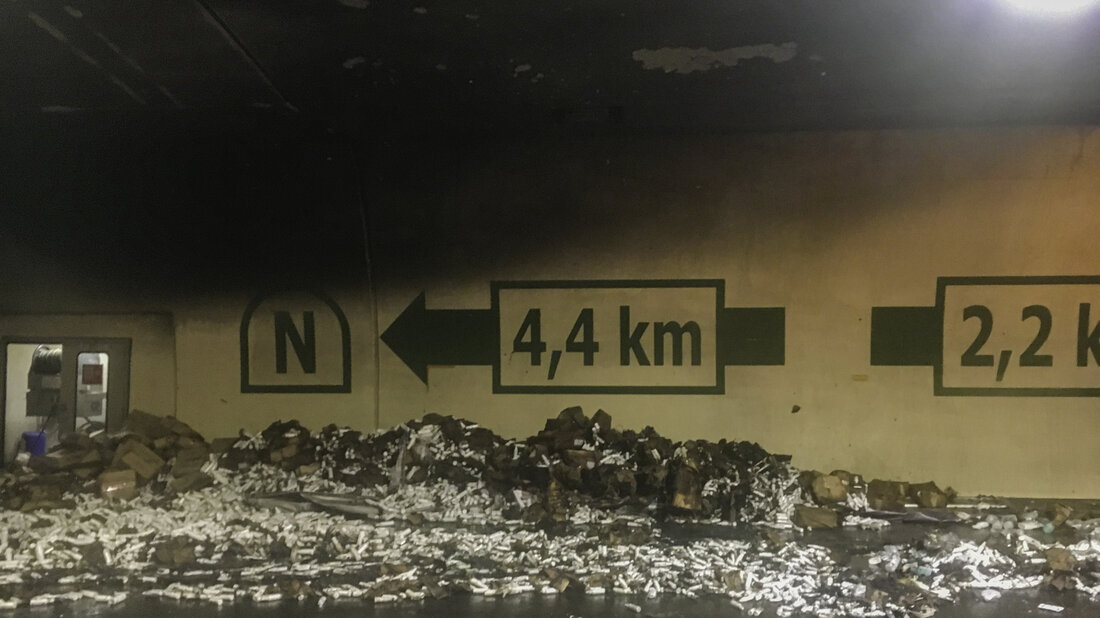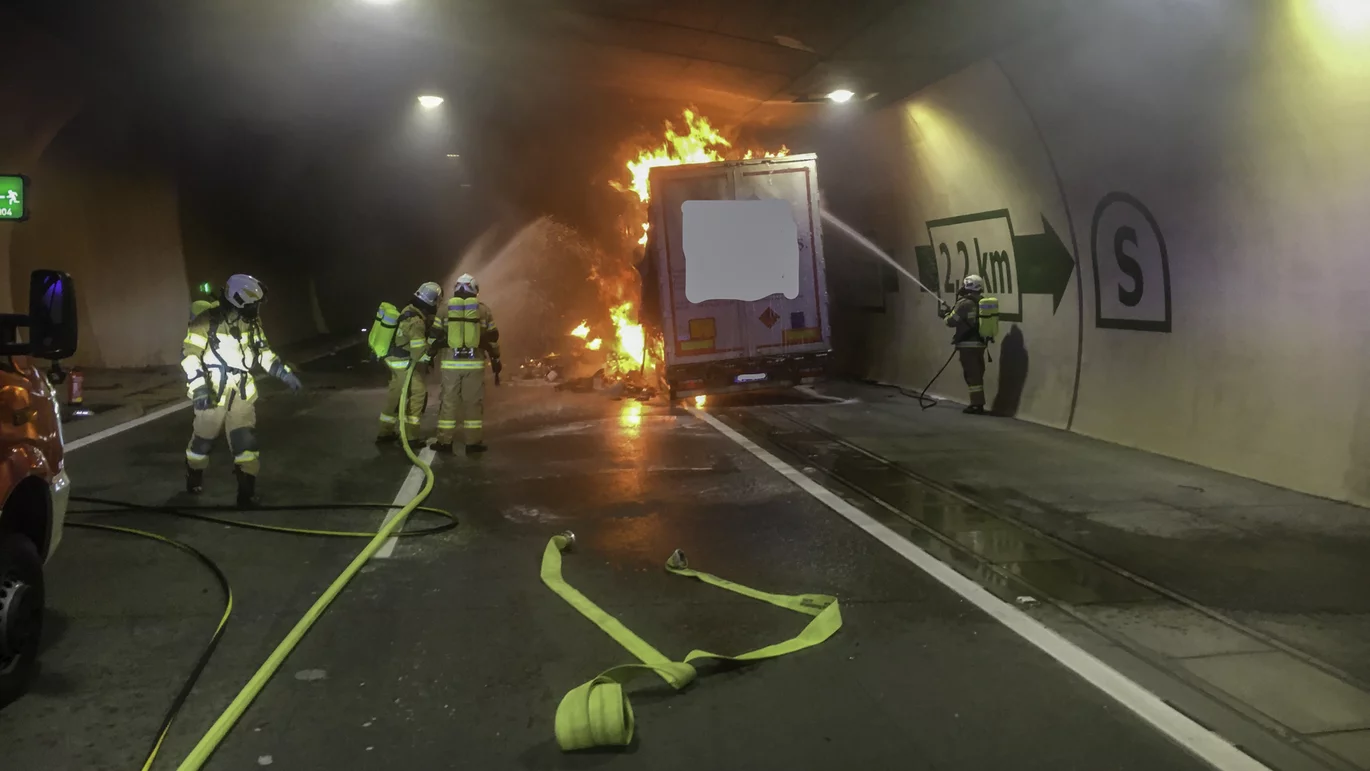On 28 November 2020, the Zederhaus fire service (A) was alerted to a lorry fire in the Tauern road tunnel. On-site, dangerous goods boards and a huge bang brought back bad memories of the major fire in May 1999. At that time, twelve people were killed. This time, however, the operation was far less dramatic than feared after the first shock. We spoke to the chief of the Zederhaus fire service and incident commander Harald Pfeifenberger.
First alarm message: lorry fire
The volunteer fire services Flachau (north portal) and Zederhaus (south portal) are responsible for the first response in the Tauern road tunnel. The alarm, Harald Pfeifenberger tells us, came in at 06:00. While driving to the incident, the tunnel control centre informed that a lorry was on fire at a distance of 2.2 km from the south portal. The driver of the lorry had uncoupled the semi-trailer and drove himself to safety with the tractor in the direction of the north portal. The Zederhaus fire service then drove into the tunnel with their quick response extrication vehicle and multi-purpose fire apparatus. The extrication vehicle reached the incident site at 06:10.
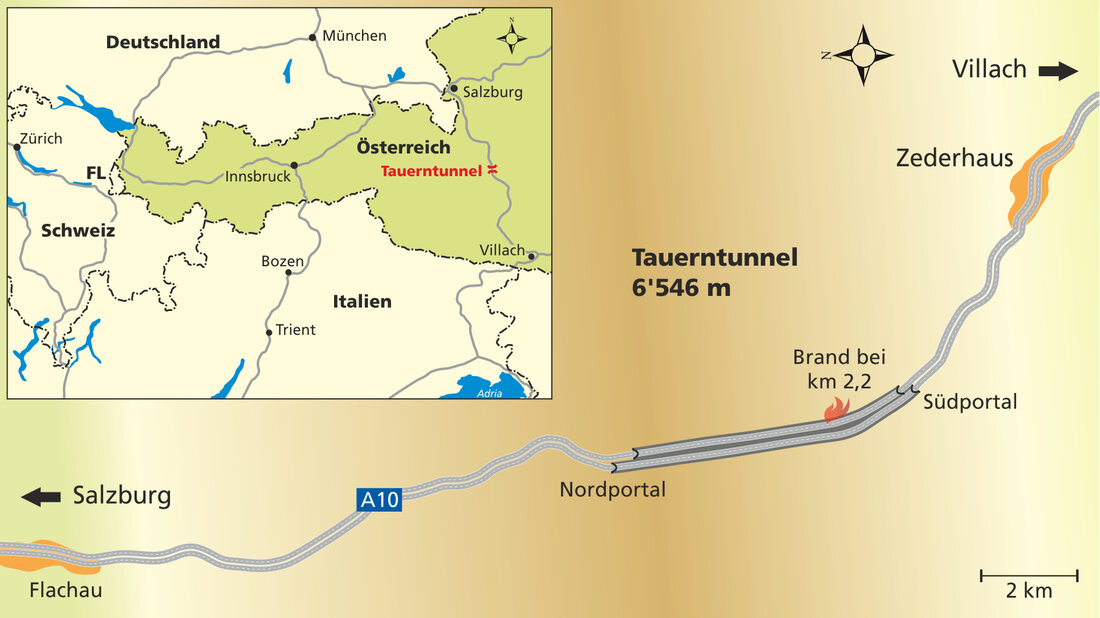
Dangerous goods and a huge bang
The initial situation was as follows for Harald Pfeifenberger: The semi-trailer was in a breakdown bay and was already burning heavily. A dangerous goods board for flammable liquids could be seen at the stern. Both tunnel tubes were closed, and all road users had already exited the tunnel as far as known. Firefighting started immediately. «Then suddenly there was a huge bang. So violent that even our comrades in front of the portal heard it and a strong pressure wave hit us inside the tunnel.» For the older comrades from Zederhaus, the shock was particularly significant because it reminded them of their dramatic deployment in May 1999. Back then, too, a dangerous goods lorry was on fire. There had been violent explosions, and twelve people were killed. The Zederhaus fire service had rescued four lorry drivers from thick smoke. Thereby the firefighters themselves had been in greatest danger from heat and smoke. This time, however, according to Harald Pfeifenberger, «The situation turned out to be manageable after the first horror.» The cause of the bang was the bursting of a tyre on the semi-trailer.
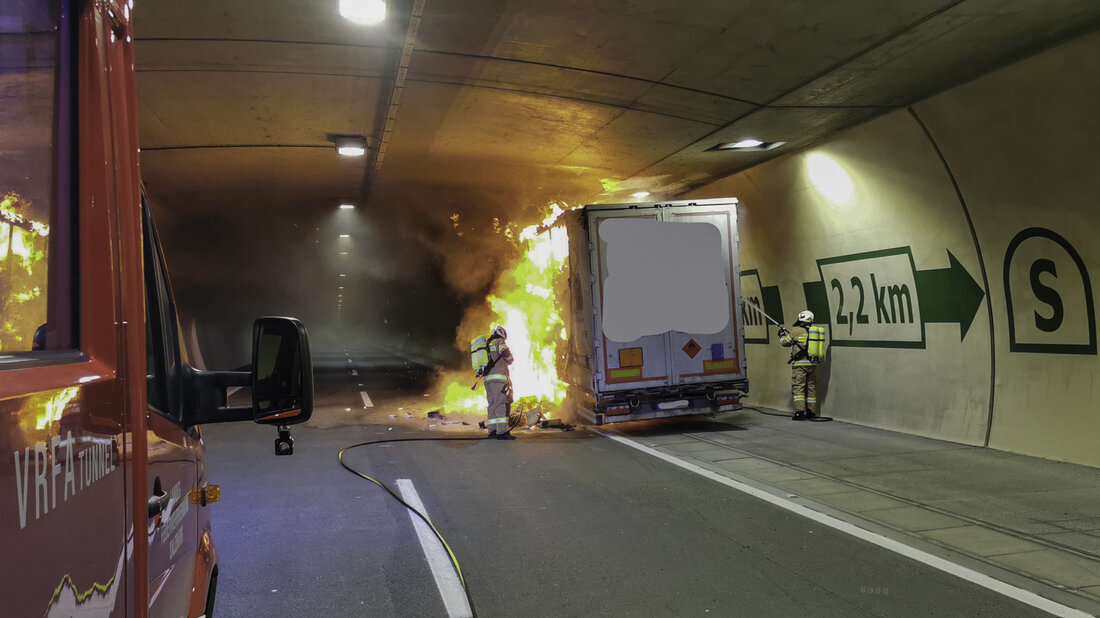
«Extinguish quickly and use lots and lots of water»
Harald Pfeifenberger ordered two lines for firefighting with wetting agents in the first attack to bring the fire under control as quickly as possible. One line from the quick response extrication vehicle, which is equipped with a high-pressure extinguishing device. The other from a wall hydrant in the breakdown bay, which also provides high pressure. «In such a situation, the name of the games is: Extinguish quickly and use lots and lots of water.» Accordingly, the advancing forces from Zederhaus and Flachau were deployed with four more lines for firefighting and structural cooling. At 06:39 the fire was under control. At 07:49, the incident command could report «Fire extinguished!».
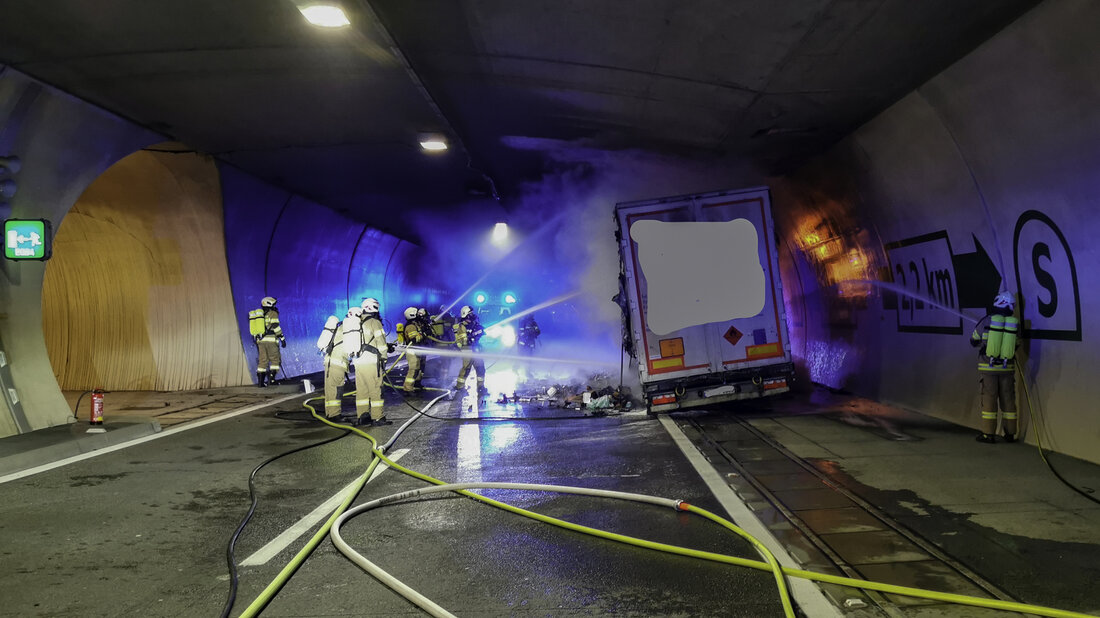
Cargo: 19 tons of disinfectant
As it gradually turned out, the lorry cargo consisted of 19 tons of disinfectant: 70% propanol was packaged in small spray bottles for hand disinfection and in containers of up to one litre. In order to be able to extinguish the fire, the containers had to be pulled apart. Collecting and removing the widely scattered cargo proved to be correspondingly time-consuming, for which a wheel loader from the tunnel carrier ASFINAG was used. At 12:20 the Zederhaus fire service was able to end the operation. The Flachau fire service stationed on the north side was withdrawn earlier because the two tunnel fire services should if possible, not get too close to each other due to the current covid-19 pandemic.
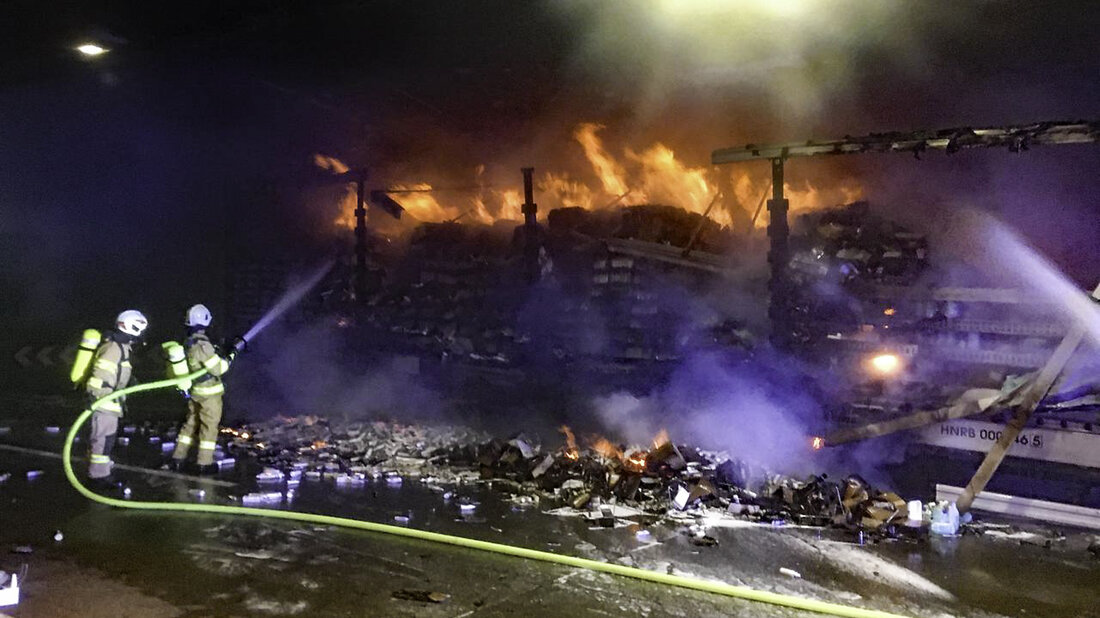
Helpful: early information, effective ventilation
Harald Pfeifenberger rates the information from the tunnel control centre as very helpful. It was good to know already on the way to the incident that the lorry driver had been able to get himself to safety. By the way, he had behaved in an exemplary manner. Before he uncoupled the tractor and fled north, he had tried to suffocate the fire with two fire extinguishers. Unfortunately, this was just as unsuccessful as further extinguishing actions by another truck driver, who had stopped spontaneously and also used fire extinguishers. Pfeifenberger regrets that it was only possible to detect the loaded dangerous goods on-site. Only a simple warning sign was attached to the semi-trailer.
The smoke caused hardly any problems: Thanks to the powerful transversal ventilation of the Tauern road tunnel, the tunnel on the upstream side was only filled with smoke for a few metres, reports Harald Pfeifenberger: «Despite the strong smoke development, it was always smoke-free on the upstream side.»
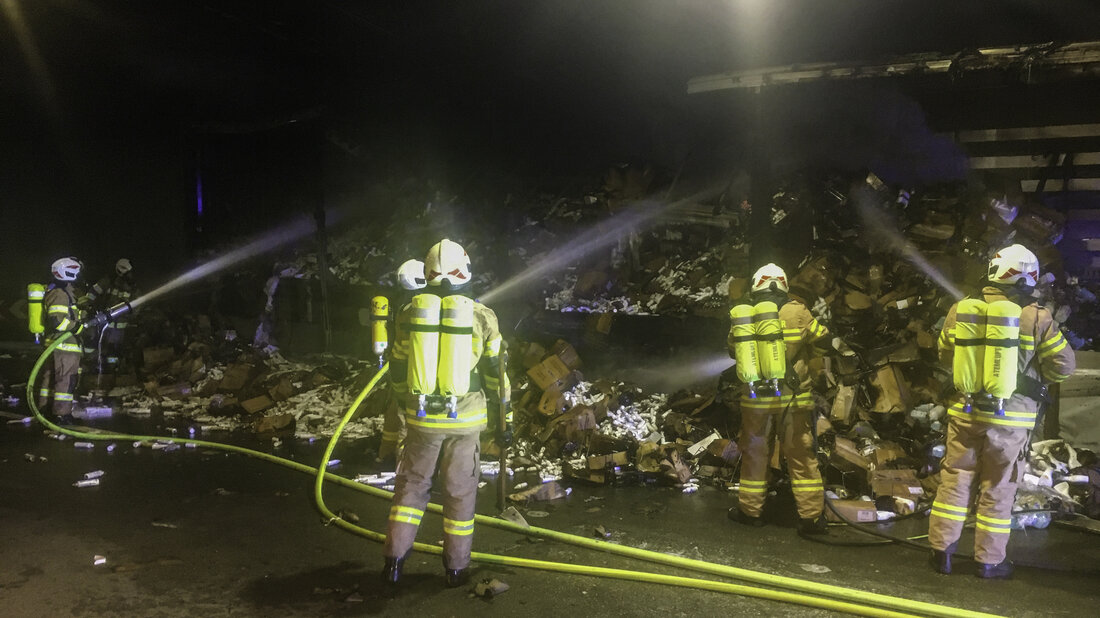
Damage to the tunnel was limited
According to the incident report, there was considerable damage to the electrical installations. The damage to the structure, on the other hand, could be limited thanks to intensive structural cooling, summarizes incident commander Pfeifenberger. This is also how ASFINAG, as the carrier of the tunnel, communicates it in a press release: The correct behaviour of the lorry driver, the quick deployment of the fire services, their good cooperation with the ASFINAG employees and the modern safety equipment in the tunnel have contributed significantly to the fact that the damage in the tunnel has remained low. As a result, the tunnel was opened to traffic just ten hours after the fire alarm.
